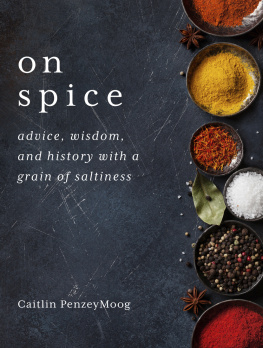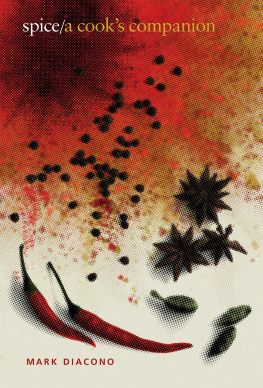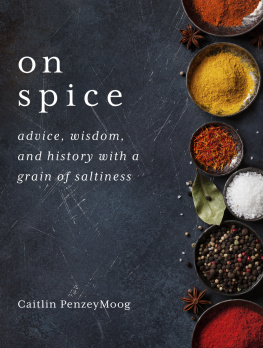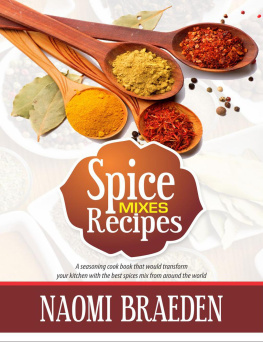Copyright 2019 by Caitlin PenzeyMoog
All rights reserved. Copyright under Berne Copyright Convention, Universal Copyright Convention, and Pan American Copyright Convention. No part of this book may be reproduced, stored in a retrieval system, or transmitted in any form, or by any means, electronic, mechanical, photocopying, recording or otherwise, without the express written consent of the publisher, except in the case of brief excerpts in critical reviews or articles. All inquiries should be addressed to Allworth Press, 307 West 36th Street, 11th Floor, New York, NY 10018.
Skyhorse Publishing books may be purchased in bulk at special discounts for sales promotion, corporate gifts, fund-raising, or educational purposes. Special editions can also be created to specifications. For details, contact the Special Sales Department, Skyhorse Publishing, 307 West 36th Street, 11th Floor, New York, NY 10018 or .
Published by Skyhorse Publishing, Inc. 307 West 36th Street, 11th Floor, New York, NY 10018. Skyhorse and Skyhorse Publishing are registered trademarks of Skyhorse Publishing, Inc., a Delaware corporation.
www.skyhorsepublishing.com
10 9 8 7 6 5 4 3 2 1
Names: PenzeyMoog, Caitlin, author.
Title: On spice: advice, wisdom, and history with a grain of saltiness / Caitlin PenzeyMoog.
Description: New York, New York: Skyhorse Publishing, 2018. | Includes bibliographical references and index.
Identifiers: LCCN 2018023556 (print) | LCCN 2018026516 (ebook) | ISBN 9781510735262 (ebook) | ISBN 9781510735255 (hardcover: alk. paper)
Subjects: LCSH: Spices. | Herbs.
Classification: LCC TX406 (ebook) | LCC TX406 .P46 2018 (print) | DDC 641.6/383dc23
LC record available at https://lccn.loc.gov/2018023556
Cover design by Mona Lin
Cover photograph by iStockphoto
Interior phography by Jimmy Hasse
Print ISBN: 978-1-5107-3525-5
eBook ISBN: 978-1-5107-3526-2
Printed in China
For Grandma, who is salt,
and Grandpa, who is pepper.
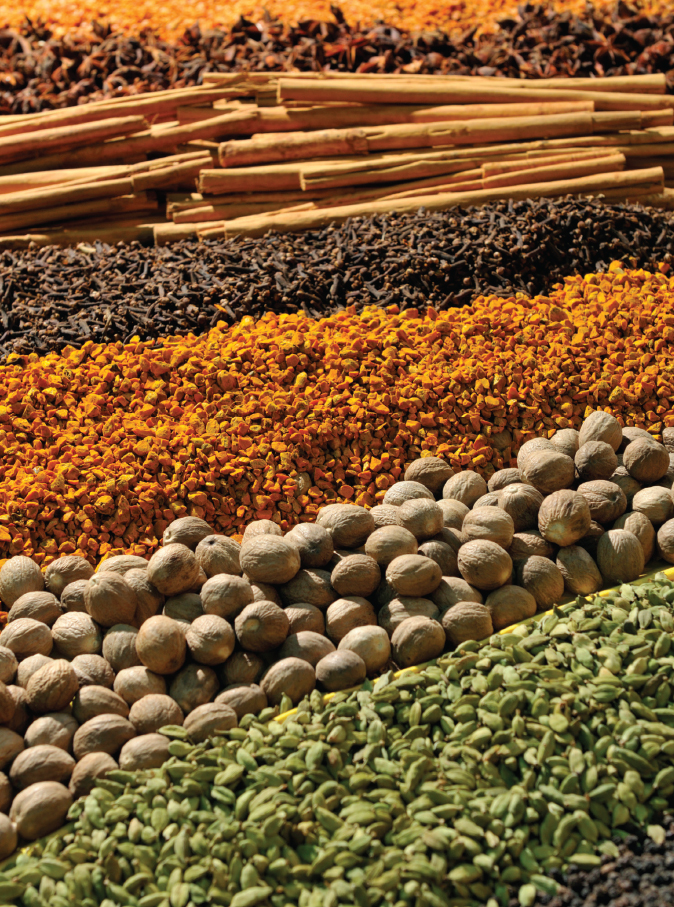
Contents

Preface

I grew up working for my family in our spice shops. There were occasional stints at my aunts store in downtown Milwaukee, and some summers in college spent at the Penzeys Spices warehouse. Mostly, I worked and learned at my grandparents small store in a suburb of Milwaukee, Wisconsin. It didnt look like much from outside: a squat rectangle, a triangular roof (like a childs drawing) with bricks painted red and cracked pavement forming a three-car parking lot. Once you opened the door, though, something remarkable happened. A blast of aroma hit, pungent and overwhelming, sweet and savory, a thousand smells commingling until they blended into the smell of the Spice House.
My grandparents started that humble store in 1957, the same year they married. They nurtured it over decades, then their children took up the business, and eventually their grandchildren came to pass through its doors on their own journeys, sifting and stirring and smelling from the time they were so young they could hardly hold the scoops. The red brick faded and was repainted, the price of vanilla rose and fell and rose again, and us three grandkids who worked the store on weekends and over summer breaks grew up among family and spice. The wares on the shelves remained mostly the same: the vanilla beans tall and proud behind glass, saffron tucked safely into the corner, a hundred apothecary jars lining shelves in long, tidy rows. A giant-old fashioned register emitted its shrill ca-ching when the cash drawer sprung open. Behind the counter hid a back room, where the mess sprawled across worktables and the shelves were lined with yet more spices, in giant burlap bags and big plastic barrels. You needed a scoop bigger than your hand to shovel out the salt. Tiny tins from Spain, still smelling of the saffron they transported, shone in the light, while the noisy cinnamon grinder stood at the ready, dusty with cinnamon powder and bulky, several decades old but looking like something that sprung out of the Industrial Revolution.
Thats all gone now: the cinnamon grinder and the burlap and the old-fashioned cash register. Its been cleared out of the building, which may stand empty but is forever imbued with the smells of a thousand spices. I last worked there four years ago, just before I moved from Milwaukee to Chicago for a new and exciting career. The future was such a strong pull that I didnt mark that occasion, the ending of my time at the Spice House. The morning was spent simply, drinking coffee with my grandma while we filled jars of cinnamon at the front counter, where the soft surface made it safer to tap them down. Tap tap tap , and the cinnamon would settle a centimeter lower in the jar as the air escaped with a soft phut , and wed fill the newly created space with more cinnamon. This is the method my grandfather taught me. He said that spices had music in them, if you knew how to listen. He had died several years before, and I hadnt marked the last time I spoke with him any more than I did that last time I closed up the store and locked the finicky old door behind me.
Writing this book has, in many ways, been my attempt to get back to that place. Its potent spice smell was the most familiar in the world to me and my brother and sister, growing up amongst its wares. Wed crowd in the sugary warmth of the vanilla room to read books about mysticism, then go to the tiny kitchen where my grandfather would cook us pork chops with some mysterious combination of spices. Grandma would make coffee for herself and cassia tea for my grandfather. I never liked cassia tea then, but now I drink it almost every day.
Ive had to relearn much of what Id forgotten: the origin of nutmeg and the different kinds of peppercorns, the nuanced difference between Turkish thyme and Mexican thyme, how to make dried mustard hot again. I grew up with spices, but they had been like air to me: I was surrounded and took it for granted. Informal lessons were applied over a thousand different customer interactions, wondering if we had a spice that could make broccoli taste good or whether grinding a nutmeg was really necessary for their holiday drink. Sometimes I knew the answer, and sometimes Id run back to where someone older was working, seeking the answers I should have already had. Remind me the difference between Malabar and Lampong pepper . Do we sell any pepper hotter than jalapeo? How long does a vanilla bean last?
As youll see in the coming pages, to write about spices is also to write about my family. This book addresses the questions I heard, over and over again, while working in their shop. Much is information I picked up over the course of a childhood spent among the spices. I hope the practical information and advice serves well anyone interested in spices and cooking. This book addresses the unasked questions, too, the type customers didnt know to raise, like whether more expensive spices are superior (only in certain cases), and the efficacy of miracle spices (highly doubtful), and when its worth the effort to toast and hand-grind spices (whenever you have the time).
Spices also act as a window to other subjectshistory, myth, cooking, culture, science, food productionand when I thought it of interest, I included discussion on these topics. Sometimes, thinking I knew the answer but finding my explanation lacking, I consulted the old books on spices kept at my grandparents house. This research led me down some avenues I hadnt anticipated, but part of the education my grandparents tried to impart is to always follow your curiosity. When I heard the spices singing, I stopped to listen.

